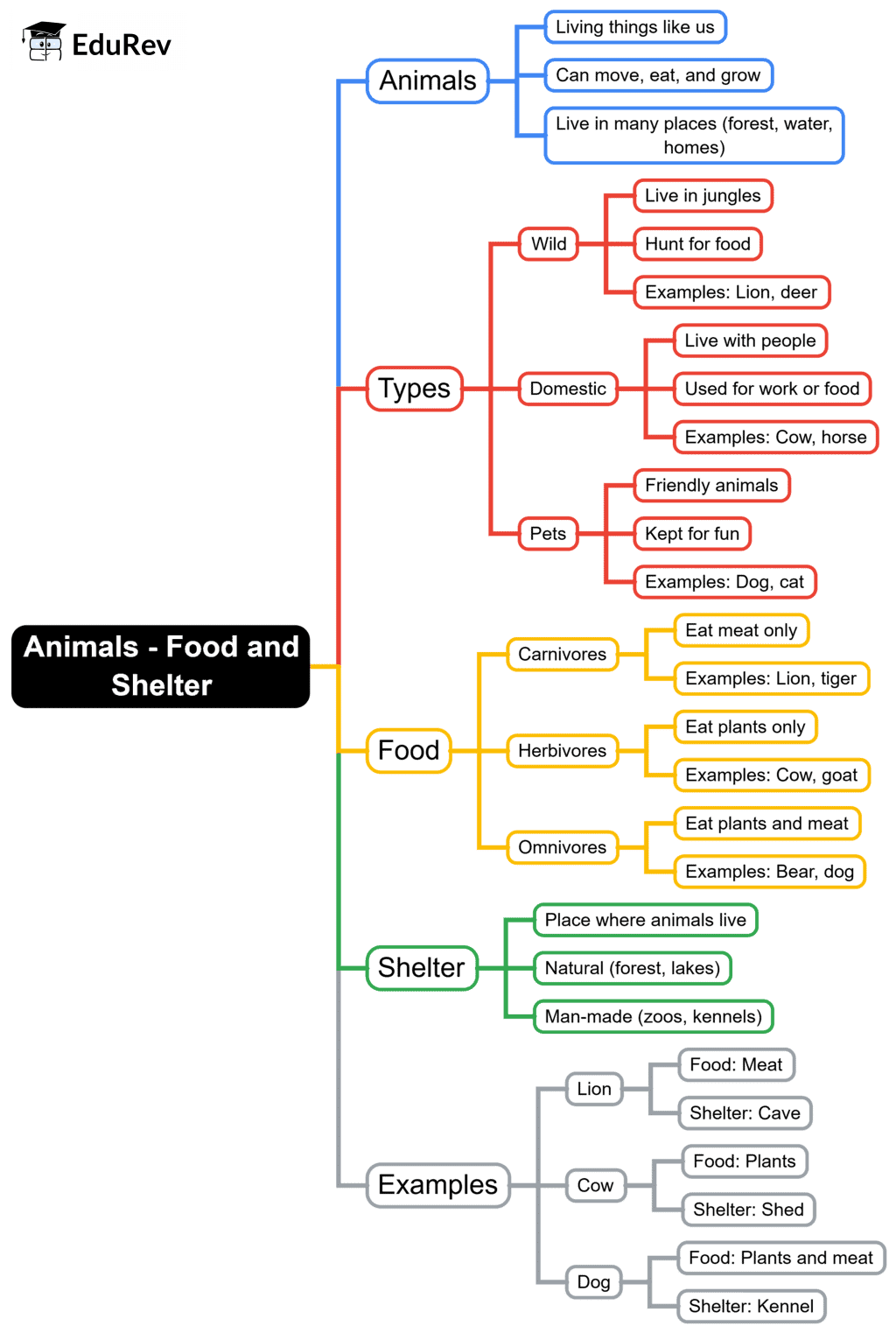Class 1 Exam > Class 1 Notes > EVS for Class 1 > Mind Map: Animals - Food and Shelter
Mind Map: Animals - Food and Shelter | EVS for Class 1 PDF Download

The document Mind Map: Animals - Food and Shelter | EVS for Class 1 is a part of the Class 1 Course EVS for Class 1.
All you need of Class 1 at this link: Class 1
|
33 videos|215 docs|44 tests
|
FAQs on Mind Map: Animals - Food and Shelter - EVS for Class 1
| 1. What types of food do different animals eat? |  |
Ans. Animals can be classified based on their dietary habits into three main categories: herbivores, carnivores, and omnivores. Herbivores, like cows and rabbits, primarily eat plants. Carnivores, such as lions and eagles, mainly consume other animals. Omnivores, like bears and humans, have a varied diet that includes both plant and animal sources.
| 2. How do animals find shelter in the wild? |  |
Ans. Animals find shelter through various means depending on their species and environment. Some animals build their own shelters, like beavers constructing dams or birds making nests. Others may seek natural shelters, such as caves or hollow trees. Some animals, like ants and termites, create complex underground structures for protection.
| 3. Why is food important for animal survival? |  |
Ans. Food is crucial for animal survival as it provides the necessary nutrients and energy required for growth, reproduction, and daily activities. Without adequate food, animals may suffer from malnutrition, weakened immune systems, and ultimately, a decline in health that can lead to death.
| 4. What are some examples of animal shelters? |  |
Ans. Animal shelters can vary widely among species. For example, birds often build nests in trees or shrubs, while foxes may use burrows in the ground. Larger mammals, like bears, may find shelter in caves, while marine animals, such as fish, often seek refuge among coral reefs or underwater plants.
| 5. How does the availability of food and shelter affect animal populations? |  |
Ans. The availability of food and shelter significantly impacts animal populations. When resources are abundant, populations can thrive and grow. Conversely, if food and shelter are scarce due to environmental changes or human activities, animal populations may decline as competition for resources increases and survival rates decrease.
Related Searches
















